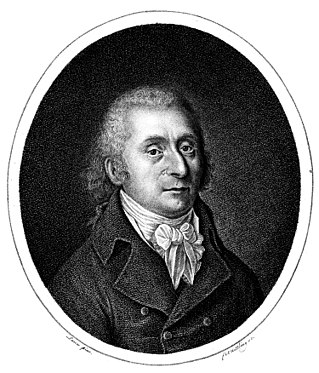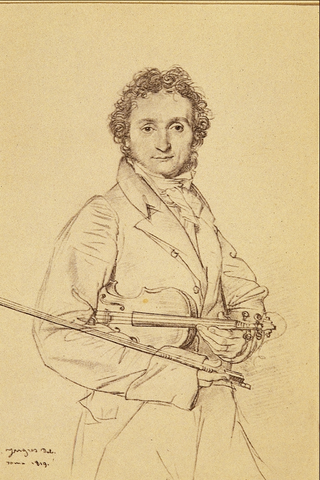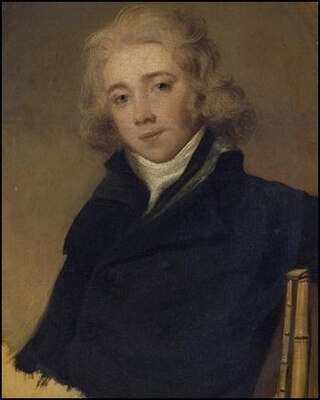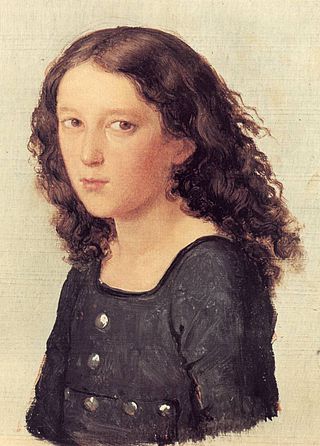
The double bass, also known as the upright bass, the acoustic bass, the bull fiddle, or simply the bass, is the largest and lowest-pitched chordophone in the modern symphony orchestra. It has four or five strings, and its construction is in between that of the gamba and the violin family.
A concerto is, from the late Baroque era, mostly understood as an instrumental composition, written for one or more soloists accompanied by an orchestra or other ensemble. The typical three-movement structure, a slow movement preceded and followed by fast movements, became a standard from the early 18th century.

Scordatura is a tuning of a string instrument that is different from the normal, standard tuning. It typically attempts to allow special effects or unusual chords or timbre, or to make certain passages easier to play. It is common to notate the finger position as if played in regular tuning, while the actual pitch resulting is altered. When all the strings are tuned by the same interval up or down, as in the case of the viola in Mozart's Sinfonia Concertante for Violin, Viola and Orchestra, the part is transposed as a whole.

Carl Ditters von Dittersdorf was an Austrian composer, violinist, and silvologist. He was a friend of both Haydn and Mozart. His best-known works include the German singspiel Doktor und Apotheker and a number of programmatic symphonies based on Ovid's Metamorphoses.

Georg Christoph Wagenseil was an Austrian composer.

A viola concerto is a concerto contrasting a viola with another body of musical instruments such as an orchestra or chamber music ensemble. Throughout music history, especially during the Baroque, Classical, and Romantic eras, viola was viewed mostly as an ensemble instrument. Though there were a few notable concertos written for the instrument in this time period, these instances were quite rare and the instrument continued to be ignored. However, during the 20th century, the instrument was revitalized thanks to the work of a number of violists and composers, which led to the commission and composition of many more viola concertos, expanding the repertoire significantly.

Franz Anton Hoffmeister was a German and Austrian composer and music publisher.

Johann Baptist Wanhal was a Czech classical music composer. He was born in Nechanice, Bohemia, and died in Vienna. His music was well respected by Mozart, Haydn, Beethoven and Schubert. He was an instrumental performer as well. While being a proficient organist, he also played the violin and cello.
A bassoon concerto is a concerto for bassoon accompanied by a musical ensemble, typically orchestra. Like bassoon sonatas, bassoon concerti were relatively uncommon until the twentieth century, although there are quite a few bassoon concerti from the Classical period. Some contemporary bassoon concerti are scored for solo bassoon and wind or string orchestras.

The Violin Concerto No. 1, Op. 6, was composed by Niccolò Paganini and dates from the mid-to-late 1810s. It was premiered in Naples, Italy on 31 March 1819.
A double bass concerto is a notated musical composition, usually in three parts or movements, for a solo double bass accompanied by an orchestra. Bass concertos typically require an advanced level of technique, as they often use very high-register passages, harmonics, challenging scale and arpeggio lines and difficult bowing techniques. Music students typically play bass concerti with the orchestral part played by a pianist who reads from an orchestral reduction.

Hyacinthe Jadin was a French composer who came from a musical family. His uncle Georges Jadin was a composer in Versailles and Paris, along with his father Jean Jadin, who had played bassoon for the French Royal Orchestra. He was one of five musical brothers, the best known of whom was Louis-Emmanuel Jadin.
An organ concerto is an orchestral piece of music in which a pipe organ soloist is accompanied by an an orchestra, although some works exist with the name "concerto" which are for organ alone.

The Concerto for Piano, Violin, and Strings in D minor, MWV O4, also known as the Double Concerto in D minor, was written in 1823 by Felix Mendelssohn when he was 14 years old. This piece is Mendelssohn's fourth work for a solo instrument with orchestral accompaniment, preceded by a Largo and Allegro in D minor for Piano and Strings MWV O1, the Piano Concerto in A Minor MWV O2, and the Violin Concerto in D minor MWV O3. Mendelssohn composed the work to be performed for a private concert on May 25, 1823 at the Mendelssohn home in Berlin with his violin teacher and friend, Eduard Rietz. Following this private performance, Mendelssohn revised the scoring, adding winds and timpani and is possibly the first work in which Mendelssohn used winds and timpani in a large work. A public performance was given on July 3, 1823 at the Berlin Schauspielhaus. Like the A minor piano concerto (1822), it remained unpublished during Mendelssohn's lifetime and it wasn't until 1999 when a critical edition of the piece was available.
The Symphony in E-flat Major, Opus 33 by the Viennese composer Anton Eberl (1765-1807) was written during the course of 1803. The premiere took place in Vienna, Austria on January 6, 1804. Also, at the same concert Eberl premiered his Piano Concerto in E-flat, Op. 40, and his Concerto for Two Pianos in B-flat, Op. 45. It is classical in style. The performance time is about 30 minutes. It is scored for 2 flutes, 2 oboes, 2 clarinets, 2 bassoons, 2 horns, 2 trumpets, timpani and strings. The work was dedicated by Eberl to Prince Lobkowitz, or Le Prince Regnant De Lobkowitz.
The Symphony in D minor, Opus 34 by the Viennese composer Anton Eberl (1765-1807) was written during the course of 1804. The premiere took place in Vienna, Austria on January 25, 1805. It is classical in style. The performance time is about 30 minutes. It is scored for 2 clarinets, 2 oboes, 2 bassoons, 2 horns, 2 trumpets, timpani and strings.

Koussevitzky Double Bass Concerto Op. 3 in F♯ Minor is a three movement work composed in 1902 for the double bass.

Double Bass Concerto No. 2 in B Minor is a work for double bass and orchestra by Giovanni Bottesini. The piece runs approximately 20 minutes.












